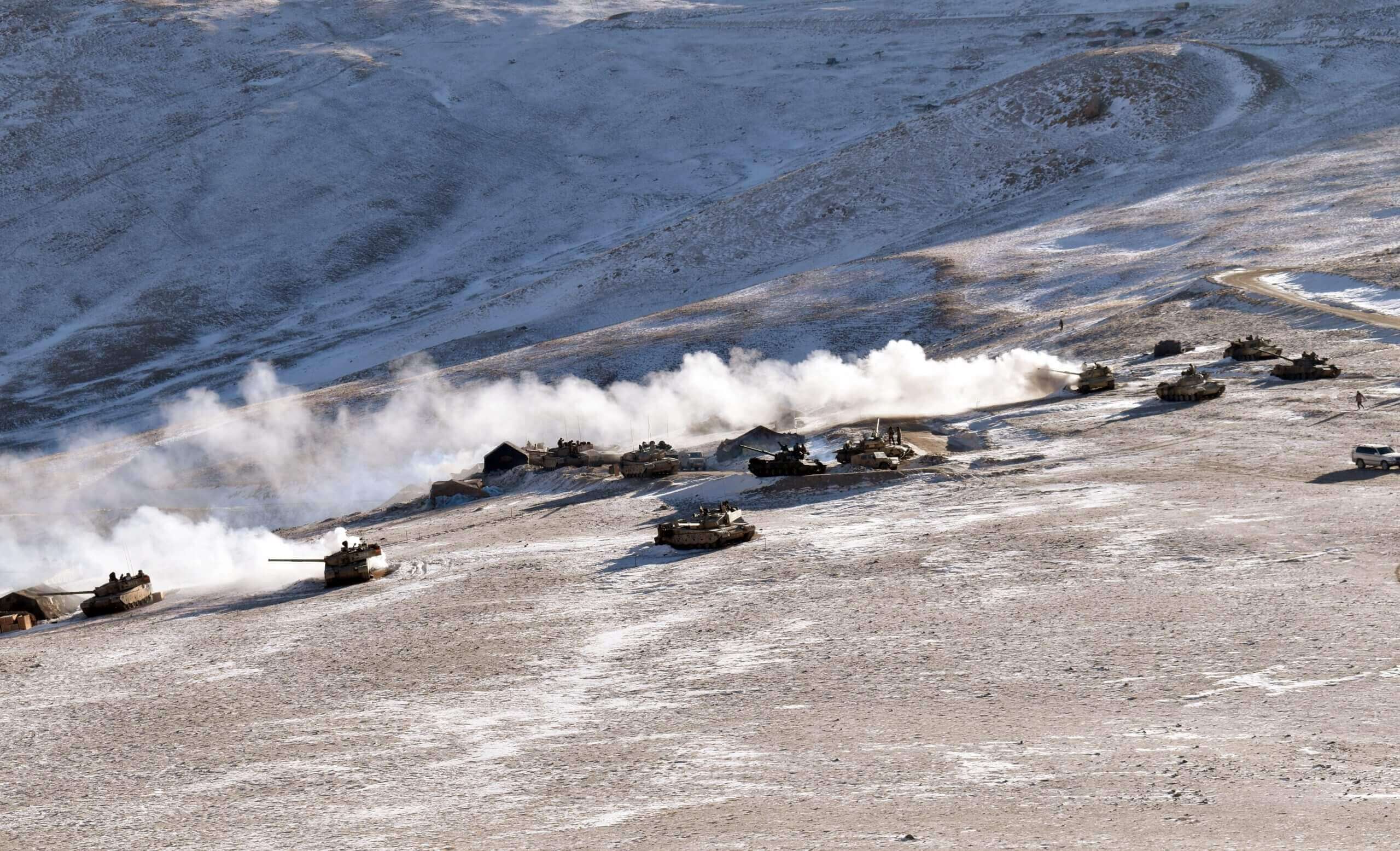
Complexities of Chinese “New Era” Along Indian Northern Borders

On 01 July 2021 President Xi clearly threatened that “no one should underestimate” the will of the Chinese people to defend their national sovereignty and territorial integrity. A very large number of incursions lately by the Chinese military aircrafts to Taiwan’s air defence identification zone and also their well publicised amphibious landing exercises, are a display of its joint combat capabilities and propaganda.
At demonstration to Taiwan (and United States) were day and night capabilities, of PLA’s ability to quickly assemble assets from different units/ squadrons, testing of joint combat and communication capabilities, electronic warfare airplanes and signal jammers to disable enemy radar, missile guiding systems and wireless communication. Over a period of time, China has undertaken calculated risks to change the military balance of power in the South China Sea.
The ongoing 19 month border dispute in Eastern Ladakh, since April 2020, was nothing akin to any previous happenings (except the 1962 War). Apparent after the impasse of 13th Round of Talks in October 2021, the incursions were calculated that there was “deep geo-political messaging” for India. China’s intimation was clear, of having risen and ready for geo-strategic risks. These are game-changers, part of “new era” of President Xi Jinping in the 19th People’s Congress of 2017. China has exhibited revanchist, hegemonic and expansionist intent, in the two China Seas, Taiwan and Ladakh, and against South East Asian Nations.
There are two prognostications. First, there is an onward march of China towards the Great Rejuvenation and Global ambitions. In doing so, China is buying global influence steadily. Decades of economic growth and government prioritization have enabled China to create a nexus of global land based and maritime trade. To facilitate the flow of goods in and out of the country, China has developed some of the world’s largest and busiest ports, with key investments in 100 ports in at least 63 nations.
China is also attempting to build its soft power by pushing Chinese values. This is the purpose of Confucius Institutes intimating their socialist governance system as superior. To achieve a super power status, China had to close the regional peripheral issues once and for all. Larger problem rested with India, Taiwan, Japan and South China Sea, and partially with Bhutan.
With India there had been little progress through multifarious mutual discussions over a long time. China is not ready to allow its global ambitions to be put on back-burner by regional peripheral problems that had no end in sight. Eventually, China will attempt to resolve the peripheral issues in all manners suitable to it, even by force if necessary, and later will insist on its own world order.
Second, China has tried to fix the LAC, without any amicable give or take. There are evidently three directions in this. One, the Xiokang villages that started three years ago, are placing settled population in areas that China opines is its territory, and which has no relations to Indian claims or McMahon or Johnson Lines or boundaries as per Survey of India maps. There is relevance contextually of the Agreement on the Political Parameters and Guiding Principles for the Settlement of the Boundary Question, signed between India and China in 2005. This Agreement had prescribed that any settlement “should safeguard due interests of their settled populations in the border areas”.
Beijing’s emphasis on development of villages and towns in the border areas and role of civilians in protecting sovereignty and territorial integrity clearly indicates that China would expand settlements all along its disputed boundaries with India. China may also oppose construction of border infrastructure by India, citing its new law, which prohibits building permanent structures in the border areas without permission of Beijing. China may in future cite its border villages and infrastructures to counter territorial claims of India.
Two, on 23 October 2021, the Standing Committee of the National People’s Congress, China’s top legislative body, passed a new land law for the “protection and exploitation of the country’s land border areas” which will come into effect from 01 January 2022. Though this law is not expressly for the border with India, however, as the China-India boundary is unresolved, the mention that “the sovereignty and territorial integrity of…China are sacred and inviolable”, has ominous portends. This especially since the State has been directed to “take measures to safeguard territorial integrity and land boundaries and guard against and combat any act that undermines [these]”. It is likely that Chinese have announced that the resolution of the boundary question through negotiations is past and that sovereignty will be assured through other means that is use of force.
Three, PLA had been probing along the controversial areas – like Depsang, Pangong Tso, Demchok-Chumar, Barahoti, RakuLa, Yangtse and Longju. The situation that has emanated in Eastern Ladakh exhibits that Aksai Chin is becoming a Belt of Actual Control as against a Line of Actual Control. This suits China the best. It is opined that all access towards Aksai Chin, which encompasses Depsang Plateau, have been largely denied by this new Belt of Actual Control. This does not imply that the state of Arunachal Pradesh as an irritant will be abandoned; China will continue using references to it for its geopolitical value. It is likely that the faceoffs will continue in many other areas also in the Central Sector and North East, and which will have to be guarded against. By the character of the Force, PLA finding voids, will transgress at will. If Eastern Ladakh of 2020-2021 is a case in point, LAC must be held in such strength to deny any undue opportunities.
In sum, the management of LAC and negotiations on LAC/ boundary are in for a substantive change. Forecasting the course the broader border issue will take, at this juncture, is problematic. The worst-case scenario is hostilities with China/ PLA. India needs to distil a vision and undertake strategic planning for an undefined future. It will be a serious quandary if Chinese procrastinate and dither, increasingly showing signs of lesser and lesser focus and interest in future talks.
India cannot afford to lax the vigilance or we will be surprised with further PLA incursions or surreptitiously construct and present lived-in villages in disputed territory. Any PLA and MOFA attempt to seek easing of tensions on the LAC on the basis of existing holding will only be an attempt to solidify the situation for permanence. That must not be accepted.
*********************
Disclaimer
The opinions expressed in this article are the author’s own and do not reflect the views of Chanakya Forum. All information provided in this article including timeliness, completeness, accuracy, suitability or validity of information referenced therein, is the sole responsibility of the author. www.chanakyaforum.com does not assume any responsibility for the same.
Chanakya Forum is now on . Click here to join our channel (@ChanakyaForum) and stay updated with the latest headlines and articles.
Important
We work round the clock to bring you the finest articles and updates from around the world. There is a team that works tirelessly to ensure that you have a seamless reading experience. But all this costs money. Please support us so that we keep doing what we do best. Happy Reading
Support Us





















POST COMMENTS (0)